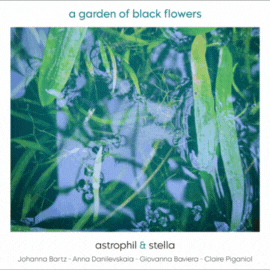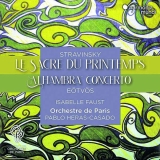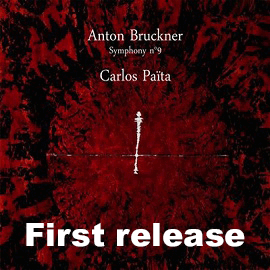 Peter Eötvös: Violinkonzert Nr. 3 (Alhambra); Igor Stravinsky: Le Sacre du Printemps; Isabelle Faust, Violine, Orchestre de Paris, Pablo Heras-Casado; 1 CD Harmonia Mundi HMM 902655; Aufnahme 09.2019, Veröffentlichung 04.2021 (57'48) - Rezension von Remy Franck
Peter Eötvös: Violinkonzert Nr. 3 (Alhambra); Igor Stravinsky: Le Sacre du Printemps; Isabelle Faust, Violine, Orchestre de Paris, Pablo Heras-Casado; 1 CD Harmonia Mundi HMM 902655; Aufnahme 09.2019, Veröffentlichung 04.2021 (57'48) - Rezension von Remy Franck
Der 1944 geborene ungarische Komponist Peter Eötvös hat sich für sein 3. Violinkonzert von der Alhambra inspirieren lassen. Dazu sagte er: « In der Festung Alhambra zeigt sich mustergültig die Verschränkung von spanischer und arabischer Kultur, die dank Komponisten wie Manuel de Falla, Claude Debussy, Maurice Ravel und vielen anderen Eingang in die westliche Kunstmusik gefunden hat. Die zahlreichen Brunnen, die sich in der Burganlage finden, die umgebenden Berge, der unglaubliche andalusische Sonnenuntergang – all das wurde Teil meines Stückes. »
Eötvös’ musikalischer Rundgang durch die andalusische Festungsanlage evoziert tatsächlich das Raffinement der Architekten, und mit der fein ziselierten Musik fühlt man sich sowohl in die Größe der Burg wie auch in den fein kolorierten Löwenhof oder das Stalaktitengewölbe versetzt. Die Musik ist fragil, aber gleichzeitig farbig und reich dekoriert. Der Violinpart ist technisch ungemein herausfordernd, und dennoch kann Isabelle Faust bei allem technischen Raffinement auch noch Musikalität wahren. Das Konzert ist eine musikalische Arabeske!
Pablo Heras-Casado hat sich wohl von diesem Violinkonzert für seine Interpretation von Stravinskys Sacre du Printemps inspirieren lassen. Wohl ist alles an Klangkraft und Rhythmik vorhanden, was ein guter Sacre du Printemps braucht, aber es gibt in dieser Aufnahme auch sehr viel Raffinement und Feinzeichnung und einen allgemein her schlanken Klang mit einer fast analytisch orchestralen Klarheit, die die Bewegung und den Rhythmus bis ins kleinste Detail akzentuiert.
For his 3rd Violin Concerto the 1944-born Hungarian composer Peter Eötvös was inspired by the Alhambra. He said: « The intersection of Spanish and Arabic culture, exemplified by the building, has already become part of the tradition of Western art music, thanks to De Falla, Debussy and Ravel (among many others). The fountains of the palace, its dimension, the surrounding mountains, the amazing sunset of Andalusia: all of this became part of my piece. »
Eötvös’ musical tour of the Andalusian fortress evokes the refinement of the architects, and with the finely chiseled music one gets the impression of both the size of the castle and details like the finely colored lion’s court or the stalactite vault. The music is fragile, but at the same time colorful and richly ornamented. Technically, the violin part is immensely challenging, and yet Isabelle Faust is able to maintain musicality for all her technical sophistication. The concerto is a musical arabesque!
Pablo Heras-Casado was probably inspired by this violin concerto for his interpretation of Stravinsky’s Sacre du Printemps. There is certainly all the power and rhythm that a good Sacre du Printemps needs, but there is also a great deal of refinement and subtlety in this recording and a generally lean sound with an almost analytical orchestral clarity that accentuates movement and rhythm down to the smallest detail.

























